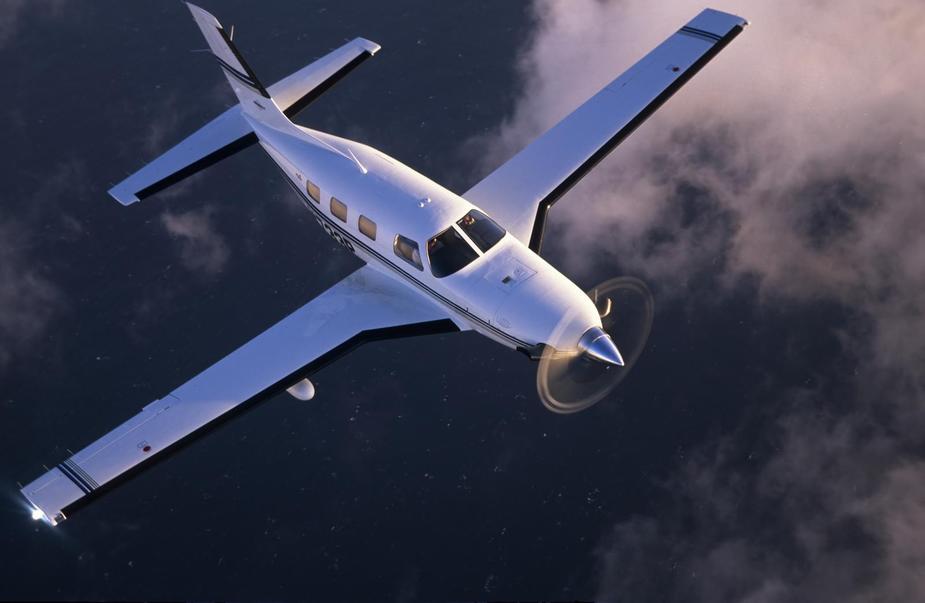Yes, it was done with my Nikon Coolscan 5000. Nobody needs more scanner than this.
I will keep it to scan my parent’s old negatives and my father’s slides one day … and then I’ll sell it. It’s really no wonder these scanners are so expensive today.
These are two more scans with that scanner and of Fuji Velvia Slides.
This one is technically not perfect, but I still like it …

This one was over the Atlantic, near Florida, at sunset, and I like it too, and the scanner did a good job!

The Lancair Velvia shot did look better, somehow richer, more natural, more detailed.
Old magazine photos (50’s, 60’s and 70’s) seem to have a better image quality, but it may be nostalgia. The movies of the period did as well.
I have a 50’s roll film camera, a no electrics fabric 50’s aircraft, a 70’s car and mainly commute on a steel frame bike. Better check in with an analyst.
Old magazine photos look better because magazines spent money on photographers. Today most of the images in Aviation magazines are made by laymen and amateurs, because those work for free. The publishing houses expect their editors to spend no money, or as little as possible, on photos. And the people working in the layout departments mostly know absolutely ZERO about image editing, because for the most part they are badly trained – and cheap too.
If you want to see what a digital camera can do look at National Geographic. Flying Magazine and AOPA Pilot employ professional photographers too, but the typical European Aviation magazine very rarely has something like photographic quality. Every now and then they pay one of the really great aviation photographers (best one in Germany: Cornelius Braun) but most travel stories, for example, are done by club pilots and amateurs who know NOTHING about photography.
Same is true for layouts. Most of the magazines are produced in the cheapest possible way. Since anybody who knows what a mouse is calls themselves a “designer” all we see is disgusting mediocrity.
As the former editor in chief of an Aviation Magazine i really know what i’m talking about here, believe me.
By the way: the original image of the TBM700 in full resolution has much more detail, but this was a smaller version. My mistake.
I’d say they look accuratte on my monitor. Camera’s with their evaluative metering can sometimes cause the sky to ‘blow out’ but Alexis’ photos look like what I would expect to see (except in the UK where you would natuatally see a dark grey skyscape rather than a blue one).
These images are optimized for printing standards in the magazine industry.
Do you mean they were converted to CMYK?
The Nikon scanner I had could scan to 12 bits/colour so produced 36-bit (I think 48-bit was the actual option) uncompressed TIFFs. I didn’t want to for ever store 5000 200MB images (my photo library, going back to year 1900, is about 70GB already so I back it up to a 160GB DLT tape which is stored offsite, and also 200MB files take far too long to load to view them) so I batch compressed them in photoshop into high quality jpeg and they ended up about 5-10MB each. Even in that they exceed the limit of the original film in most cases. I used too much Ektachrome…
By the way: the original image of the TBM700 in full resolution has much more detail, but this was a smaller version. My mistake.
But still, I prefer the Velvia sky!
One question: When scanning slides and negatives yourself, how do you cope with dust? I still have an older Nikon scanner here (with SCSI interface, can’t connect it to anything any more) and my biggest problem were always the grains of dust that turned out as big blotches in the scans and required a lot of photoshop effort to get rid of. I used compressed air from spray cans to clean the slides, but there was always some dust remaining.
I have seen DIY scanners where a slide is placed in a home made light box and you copy it by using a digital camera in macro mode!
May not be museum quality but seems to do the trick.
@ What next, Peter
yes, that Velvia sky is great, but i can do that with the D300/D4 aswell! The colors in that TBM700 image will look different on most screens that are set to sRGB Color Space while I set my DSLRs to the less spectacular “ADOBE 1998 RGB” color space which is better for professional printing (magazines, CMYK).
Dust: The Coolscan 5000 has an incredibly nice Dust and Scratch removal feature. It detects anything laying on the surface of the film (even scratches) with infrared and removes everything completely. It works so well that I did not bother to clean anything before scanning. The scan takes a little longer with “ICR” but it’s the best solution i know of, much better than software based dust removal. It does NOT work with Kodachrome though and some B&W films. If you scan with 4000 dpi and ICR and save as 24-bit Tiff you get ultra good quality. But it’s a waste of storage space for “normal” slides. Those I scan with 2000 dpi as JPGs. I only do 4000 dpi with the very best ones I have.
What next, if you need to scan slides and negatives I can give you my Coolscan for some weeks, no problem. I also have the feeder and all other nice accessories.